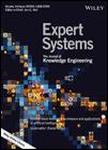版权所有:内蒙古大学图书馆 技术提供:维普资讯• 智图
内蒙古自治区呼和浩特市赛罕区大学西街235号 邮编: 010021

作者机构:Univ Minho ALGORITMI Res Ctr Informat Syst Dept Guimaraes Portugal Metyis Porto Portugal Ctr Comp Graf Guimaraes Portugal
出 版 物:《EXPERT SYSTEMS》 (专家系统;国际知识工程杂志)
年 卷 期:2021年第38卷第7期
页 面:e12741-e12741页
核心收录:
学科分类:12[管理学] 1201[管理学-管理科学与工程(可授管理学、工学学位)] 08[工学] 0812[工学-计算机科学与技术(可授工学、理学学位)]
基 金:European Structural and Investment Funds in the FEDER component through the Operational Competitiveness and Internationalization Programme (COMPETE 2020) [39479 POCI01-0247-FEDER-39479]
主 题:artificial intelligence Industry 4 0 machine learning optimization predictive and prescriptive analytics
摘 要:Recently, the term Industry 4.0 has emerged to characterize several Information Technology and Communication (ICT) adoptions in production processes (e.g., Internet-of-Things, implementation of digital production support information technologies). Business Analytics is often used within the Industry 4.0, thus incorporating its data intelligence (e.g., statistical analysis, predictive modelling, optimization) expert system component. In this paper, we perform a Systematic Literature Review (SLR) on the usage of Business Analytics within the Industry 4.0 concept, covering a selection of 169 papers obtained from six major scientific publication sources from 2010 to March 2020. The selected papers were first classified in three major types, namely, Practical Application, Reviews and Framework Proposal. Then, we analysed with more detail the practical application studies which were further divided into three main categories of the Gartner analytical maturity model, Descriptive Analytics, Predictive Analytics and Prescriptive Analytics. In particular, we characterized the distinct analytics studies in terms of the industry application and data context used, impact (in terms of their Technology Readiness Level) and selected data modelling method. Our SLR analysis provides a mapping of how data-based Industry 4.0 expert systems are currently used, disclosing also research gaps and future research opportunities.